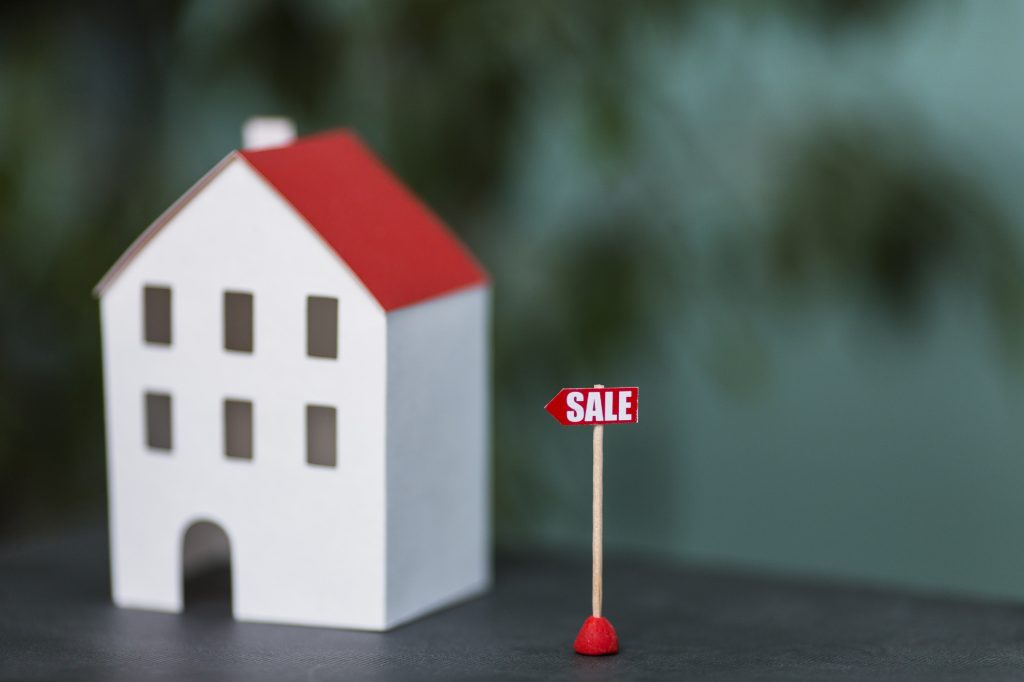
A Comprehensive Guide to Successfully Selling Your Home
Introduction
In the dynamic world of real estate, the market can shift, presenting new challenges and opportunities for homeowners looking to sell. When the scales tip in favor of buyers, it’s crucial for sellers to adopt strategic approaches to make their properties stand out. In this comprehensive guide, we’ll explore key tips for selling your home in a buyer’s market, covering pricing strategies, home improvements, and effective marketing techniques.
1. Strategic Pricing
Selling a home in a buyer’s market requires careful consideration and strategic planning, especially when it comes to pricing. Here’s an in-depth look at the key components of strategic pricing:

a. Accurate Property Valuation:
Professional Appraisal:
One of the first steps in determining the ideal selling price for your home is obtaining a professional appraisal. A certified appraiser will assess your property’s unique features, its condition, and recent market trends to provide an unbiased estimate of its current market value. This step is crucial as it sets the foundation for a realistic pricing strategy.
Comparable Sales Research:
In addition to a formal appraisal, research recent comparable sales (comps) in your neighborhood. Look for properties with similar features, size, and condition. Analyze both successful and unsuccessful sales to understand the pricing dynamics in your area. This comprehensive understanding of the market will help you make informed decisions about your property’s value.
b. Competitive Pricing:
Realistic and Competitive Pricing:
Once armed with the appraisal and comp data, the next step is setting a competitive and realistic price for your property. While it’s tempting to aim for the highest possible price, a buyer’s market often requires a more strategic approach. Consider pricing your home slightly below the appraised value or the average of comparable sales to attract potential buyers.
Creating Urgency:
Pricing slightly below market value can create a sense of urgency among potential buyers. In a buyer’s market, where choices abound, a well-priced property stands out and may receive more attention. This strategy can lead to quicker offers and negotiations, helping you avoid prolonged listing periods.
c. Flexible Negotiation:
Preparedness for Negotiations:
In a buyer’s market, negotiation is a common and expected part of the selling process. Be mentally prepared to negotiate, and understand that flexibility is key. Your initial asking price may serve as a starting point, but be open to adjusting it based on buyer feedback, market response, and the overall negotiation process.
Incentives to Sweeten the Deal:
To further entice potential buyers, consider offering incentives as part of your negotiation strategy. This could include covering a portion of closing costs, providing a home warranty, or including high-value appliances in the sale. These incentives can make your property more appealing and distinguish it from others on the market.
2. Strategic Home Improvements

When selling your home in a buyer’s market, the importance of making a positive and lasting impression cannot be overstated. Strategic home improvements play a pivotal role in enhancing your property’s overall appeal. Let’s delve into the key aspects of strategic home improvements:
a. Curb Appeal Enhancement:
Making a Strong First Impression:
The exterior of your home is the first thing potential buyers see. Enhancing curb appeal is about creating an immediate and positive impression. This involves investing in landscaping to ensure a well-maintained and inviting front yard. Consider planting flowers, trimming bushes, and addressing any lawn maintenance needs. The goal is to make your property stand out from the curb.
Exterior Upgrades:
Beyond landscaping, consider exterior upgrades such as a fresh coat of paint. A well-maintained and modern exterior can significantly boost your home’s curb appeal. Address any visible wear and tear on siding, shutters, or the front door. This attention to detail sets the tone for a positive viewing experience.
b. Minor Repairs and Updates:
Making the Property Move-In Ready:
Addressing minor repairs and updates is crucial for presenting your property as move-in ready. Attend to any issues that could potentially deter buyers, such as leaky faucets, squeaky doors, or chipped paint. Consider a pre-listing home inspection to identify and rectify any hidden issues that could arise during the selling process.
Cost-Effective Improvements:
Cost-effective improvements can make a significant impact without breaking the bank. A fresh coat of paint in neutral tones can instantly modernize a space. Upgrading fixtures and hardware in key areas like the kitchen and bathrooms adds a touch of luxury. These updates contribute to the overall aesthetic appeal and functionality of the home.
c. Home Staging:
Showcasing the Property’s Potential:
Home staging is an art that involves arranging furniture and decor to showcase the property’s potential. Consider hiring a professional stager who understands the market and can highlight your home’s best features. Depersonalizing the space by removing family photos and personal items allows potential buyers to envision themselves in the home.
Creating a Neutral, Inviting Atmosphere:
The key to effective home staging is creating a neutral and inviting atmosphere. Choose neutral color schemes, arrange furniture to maximize space and flow, and ensure that each room has a defined purpose. This process allows buyers to focus on the property itself rather than the current occupants’ personal style.
d. Highlighting Energy Efficiency:
Appealing to Environmentally Conscious Buyers:
In today’s market, environmentally conscious buyers are increasingly drawn to energy-efficient features. Highlight these features to set your property apart. Consider upgrading insulation, installing energy-efficient lighting, or showcasing modern appliances with high energy efficiency ratings. This not only attracts a specific buyer demographic but also adds long-term value to the property.
3. Effective Marketing Strategies
Successfully selling your home in a buyer’s market requires more than just listing it – strategic marketing is key. Here’s an in-depth look at effective marketing strategies to maximize your property’s exposure and appeal:
a. High-Quality Listing Photos:
Professional Photography:
Investing in professional photography is a non-negotiable element of effective marketing. High-quality, well-lit photos capture your home in its best light, showcasing its features and creating a positive first impression. A skilled photographer knows how to highlight the unique aspects of your property, making it stand out among online listings.
Visual Appeal and Key Features:
Highlighting key features is essential in listing photos. Showcase the best angles of each room, focus on architectural details, and emphasize the selling points of your property. The goal is to create a visually appealing online listing that entices potential buyers to schedule a viewing.
b. Online Presence:
Leveraging Online Platforms:
In the digital age, online presence is paramount. Leverage popular real estate platforms, such as Zillow, Realtor.com, and local MLS listings, to maximize exposure. Craft a compelling property description that highlights its unique features and advantages. Ensure that all relevant information, such as square footage, number of bedrooms, and amenities, is accurate and up-to-date.
Virtual Tours and 3D Walkthroughs:
Go beyond static images by incorporating virtual tours or 3D walkthroughs. These immersive experiences allow potential buyers to explore your home remotely. This is especially valuable in a buyer’s market, where out-of-town buyers may be interested. Virtual tours provide a comprehensive view of the property, enhancing the online browsing experience.
c. Collaborate with a Skilled Real Estate Agent:
Local Market Expertise:
Partnering with a skilled real estate agent is a strategic move in navigating a buyer’s market. An experienced agent understands the local market dynamics, pricing trends, and buyer preferences. They bring invaluable insights into effective marketing strategies tailored to your specific area.
Expertise in Pricing, Marketing, and Negotiation:
A skilled agent contributes expertise in pricing your property competitively, creating targeted marketing plans, and negotiating effectively with potential buyers. Their knowledge of the market allows them to position your property optimally, increasing the likelihood of a successful sale.
d. Open Houses and Events:
Well-Promoted Open Houses:
Hosting well-promoted open houses is a classic yet effective strategy to attract a broader audience. Ensure that your agent utilizes various channels to promote the event, including online platforms, local newspapers, and social media. During the open house, create a welcoming atmosphere and be prepared to answer questions from potential buyers.
Themed Events and Exclusive Viewings:
Consider going beyond traditional open houses by organizing themed events or exclusive viewings. Themed events could focus on highlighting specific features of your property, such as a beautifully landscaped garden or a renovated kitchen. Exclusive viewings for interested parties can generate a sense of exclusivity and urgency, encouraging serious buyers to make offers.
Conclusion
In a buyer’s market, selling your home requires a strategic and proactive approach. By implementing these tips, from pricing your property strategically to making impactful home improvements and employing effective marketing strategies, you can increase your chances of a successful sale. Remember, adaptability and collaboration with professionals are key in navigating the complexities of real estate in ever-changing market conditions.